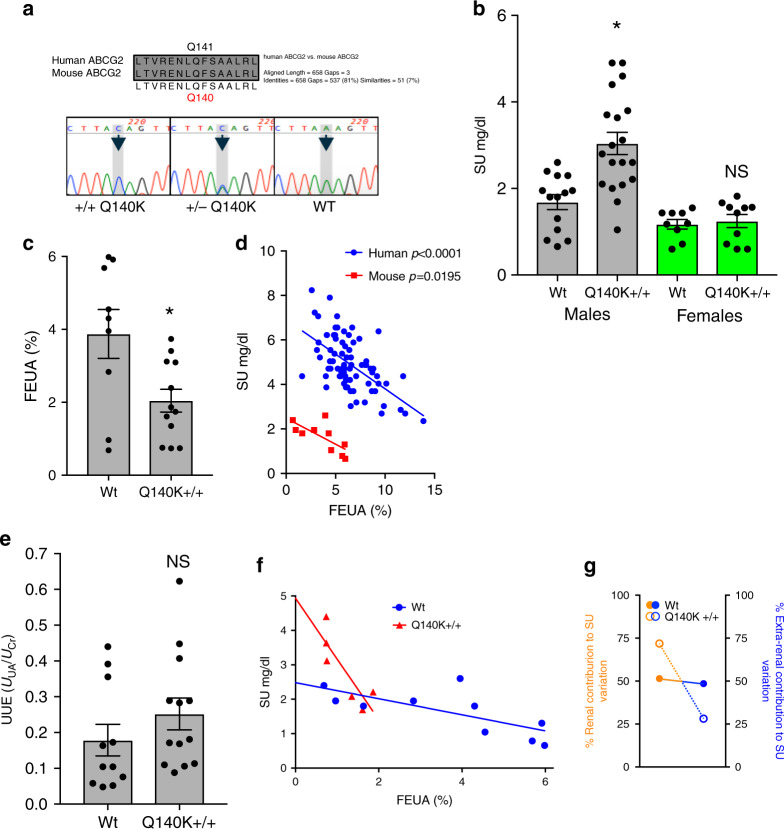Fig. 3. Male Q140K+/+ mice are hyperuricemic and demonstrate a renal urate handling phenotype similar to humans with 141K allele.
a Alignment of human and mouse ABCG2 amino acid sequence in region near Q141 residue, and the color-gram of sequencing results of animals heterozygotic for the alterations to the endogenous Abcg2 loci or homozygotic. b Serum urate levels for male and female, WT and Q140K+/+ animals (WT males n = 14; Q140K+/+ males n = 19; p = 0.0003; WT females n = 9; Q140K+/+ n = 10; p = 0.7113). c Fractional excretion of urate (FEUA) measurements from male WT (n = 9) and male Q140K+/+ (n = 12) (p = 0.01). d Comparison of Q141 human participants (n = 79) to WT mice (n = 10) and their respective relationship between FEUA and SU, fit with linear regression that are not different in slope (p = 0.6390), but are different in elevation (p < 0.0001). e Urinary urate excretion as a function of urinary creatinine was not significantly different between WT (n = 11) and Q140K+/+ (n = 13) mice (p = 0.259). f Dependence of SU on FEUA plotted for each WT (n = 10) or Q140K+/+ (n = 6) is significant for both genotypes (WT p = 0.0195; Q140K+/+ p = 0.0330), but the slope of the linear regression fits are significantly different (p = 0.0083). g Plot of the percentage of SU variability due to renal (r2) or extra-renal (1−r2) urate handling in WT or Q140K+/+ mice. Statistical analysis: b, c, e two-tailed Student’s t-test, ± SEM; d, f Linear regression with slope and elevation comparison using two-tailed ANCOVA. Source data are provided as a Source data file.

